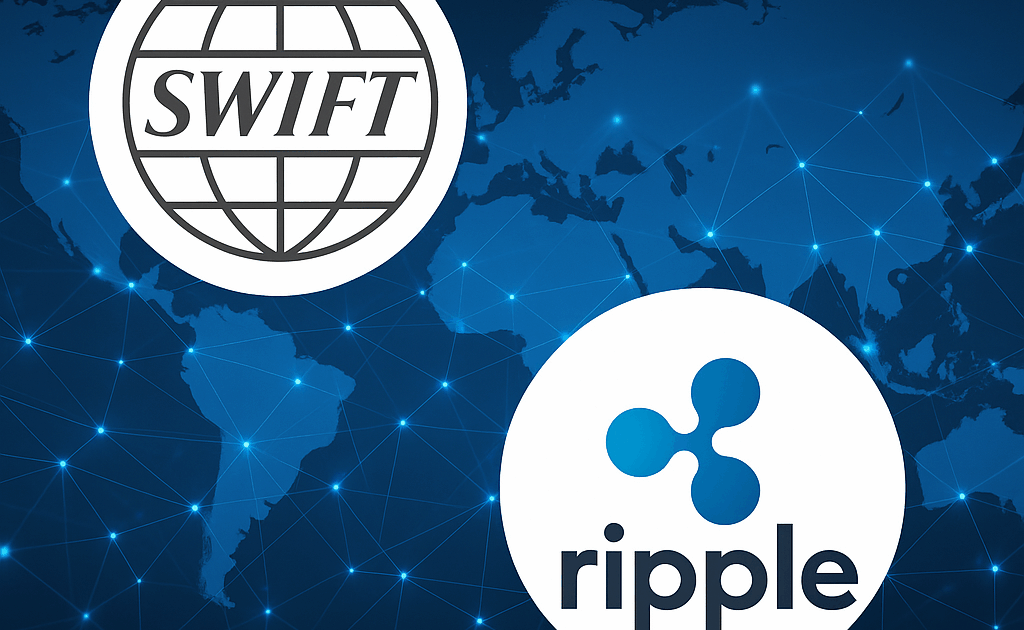SWIFT and Ripple: Making Cross-Border Payments More Efficient for Smaller International Banks

The world of cross-border payments is evolving at a pace not seen in decades. For years, the SWIFT network has been the backbone of international banking, facilitating trillions of dollars in global transactions. However, its legacy systems have often been slow, costly, and out of reach for smaller banks. Recent developments show that SWIFT is now tapping into Ripple’s technology—and indirectly into XRP liquidity—without requiring a direct Ripple-SWIFT integration.
This shift is monumental. Ripple’s blockchain-based payment solutions and XRP as a bridge currency reduce settlement times from days to mere seconds. By adopting elements of RippleNet’s infrastructure, SWIFT is signaling that the future of international payments is faster, cheaper, and more transparent. The result is an emerging ecosystem where smaller, more agile international banks can compete head-to-head with the traditional global players.
Cross-Border Payments: Once Reserved for Global Giants
Historically, only the largest multinational banks and financial institutions could handle cross-border transactions at scale. These institutions maintained expensive correspondent banking networks, often spanning hundreds of countries and involving multiple intermediary banks. For smaller institutions, the costs and complexity of establishing these relationships were prohibitive.
This meant that if you were not a Citi, HSBC, or JPMorgan, you had to rely on these giants to process international transactions. Fees were high, settlement took days, and transparency was limited. For customers—whether businesses or individuals—cross-border payments were often slow, expensive, and frustrating.
A New Era: Puerto Rico’s International Banks and Real-Time Settlements
Today, the combination of blockchain technology, stablecoins, and international banking licenses in Puerto Rico is leveling the playing field. Licensed under Puerto Rico’s Act 273 framework, international banks can now offer USD-based transactional accounts and cross-border payment solutions with unprecedented efficiency.
By integrating Ripple’s technology—or similar blockchain-based settlement layers—these smaller institutions can bypass outdated correspondent banking structures. The addition of stablecoins brings even more flexibility, allowing banks to process payments in real time, 24/7, across multiple jurisdictions.
Unlike the global giants with legacy infrastructure and bureaucratic decision-making, Puerto Rico’s international banks can adopt these innovations quickly. A smaller bank can roll out a blockchain-based payments system in months, while a multinational may take years to adapt. This agility is precisely what today’s business customers demand: real-time, transparent, and low-cost global payments.
The Strategic Advantage for Smaller Banks
For entrepreneurs, fintechs, and small to medium-sized enterprises, this is a game-changer. International banks in Puerto Rico can provide cross-border services once reserved for multinational institutions, but with better technology, faster execution, and more competitive pricing.
The ability to process payments in seconds instead of days positions these banks as leaders in financial innovation. More importantly, it opens up global markets for clients who would otherwise be stuck with the slow, outdated systems of traditional banks.
Final Thoughts: The Time to Act is Now
The SWIFT-Ripple development underscores a broader industry shift: the future of international payments belongs to those who innovate. Smaller international banks licensed in Puerto Rico have the regulatory framework, the technology, and the agility to seize this opportunity.
If you are considering setting up an international bank or acquiring one in Puerto Rico, now is the time to move. The market is evolving rapidly, and the institutions that act today will be the leaders of tomorrow.
Contact us at info@puertoricobanklicense.com for more information about establishing or acquiring an international bank in Puerto Rico.

